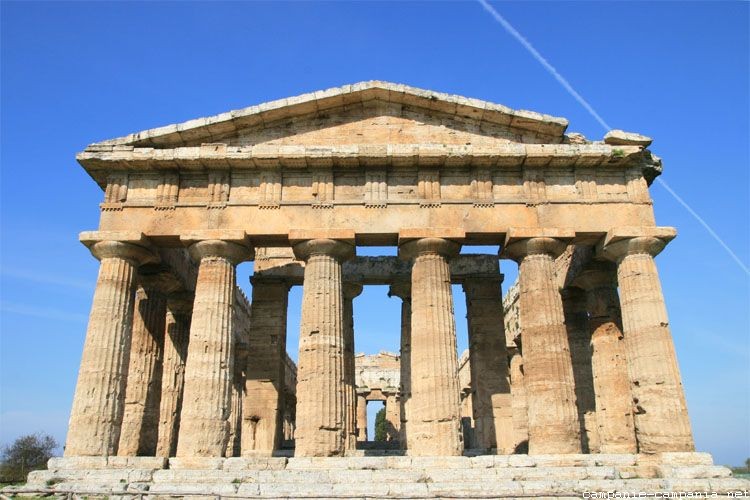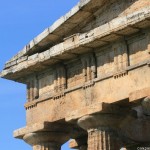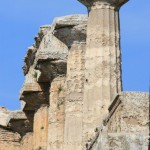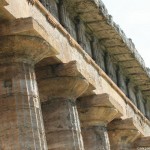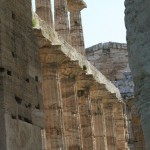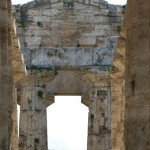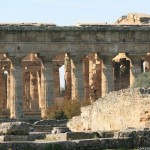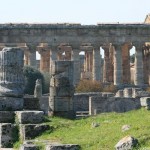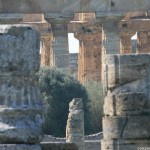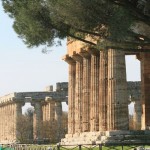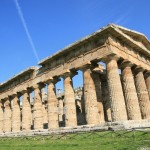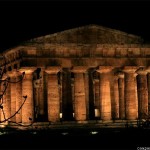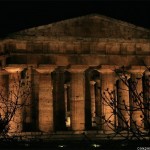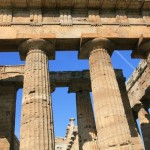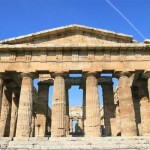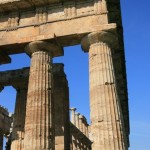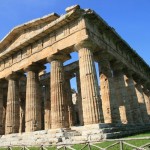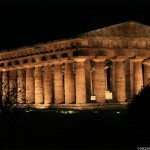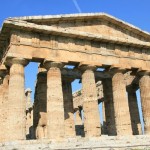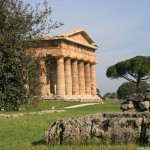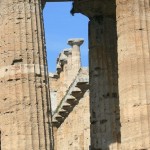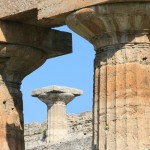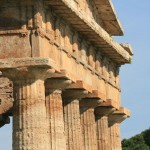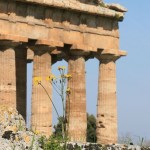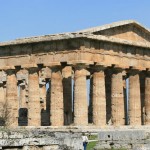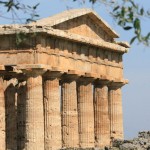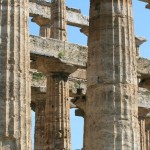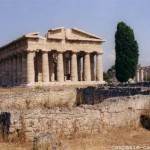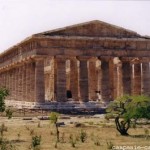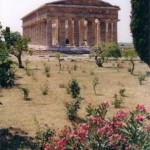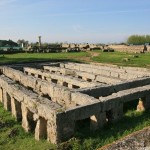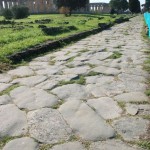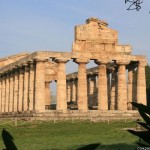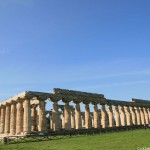Close to the previous “basilica”, the so-called temple of Neptune (sometimes referred to as Heraion II in the past), on a small elevation that makes it even more imposing, is one of the three best preserved temples in the Greek world, with Hephaestite from Athens and the Concorde Temple of Agrigento.
Built in the middle of the fifth century BC, it is considered the ultimate culmination of the Doric style.
On a three-level base, the peristyle has a colonnade of 6 by 14 Doric columns (varying from the 6 x 13 Doric cannon) carried by a base of 24 x 60 meters.
Engraved with twenty-four grooves, the columns have a slight central bulge, they support the architrave bearing the frieze, composed of triglyphs and metopes (panels alternating with triglyphs) undecorated. Even the triangular pediments are almost entirely preserved.
The cell is classically divided into two parts with two Doric columns between the passages, is divided into three naves separated by two rows of seven columns, which themselves are doubled, with superimposed columns.
On each side of the entrance are two hidden spiral staircases that lead to the roof (similar to the Temple of Athena at north).
The attribution to Neptune (or Poseidon) is not supported by archaeological or epigraphic evidence, some attribute it to Apollo, or make it an Olympian temple (dedicated to Zeus).
- Temple de Neptune, fronton
- Temple de Neptune, cella,
- Tempio di Nettuno
- Temple d’Hera
- Temple de Neptune
- Temple de Poseidon
- Temple de Neptune
- Temple de Neptune
- Temple de Neptune
- Temple de Neptune
- Temple de Neptune
- Temple de Neptune
- Temple de Neptune
- Temple de Neptune (Poséidon)
- Temple de Neptune
- Temple de Neptune
- Temple de Neptune
- Temple de Neptune
- Temple de Neptune
- Temple de Neptune
- Temple de Neptune
- Temple de Neptune
- Temple de Neptune
- Temple de Neptune
loading map - please wait...


